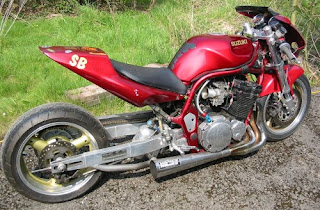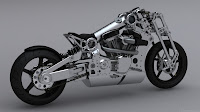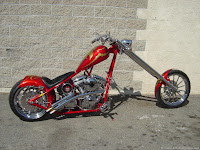Painting a motorcycle can be a time-consuming undertaking requiring careful preparation followed by hours or even days of waiting between steps. Making a mistake during the process can be easily done and may cause you to have to start over. The key to doing the job well lies in paying attention to the details during each step. By following a few painting tips, you can remove the uncertainty and finish with a paint job that you'll be more than happy with.
Preparation
To get a quality paint job on your motorcycle, you'll have to do quite a bit of preparation work. Sanding before painting is critical, and the method used will determine the paint surface you have to work with. Use wet or dry sandpaper in a number of grits including 220, 400 and 600. You'll want to work with the rougher grades of sandpaper first, beginning with the 220 to remove scratches or gouges then work your way up to the 400 or 600 to create a smooth surface to begin painting on. Take special care when working on contoured areas as it can be difficult to sand evenly there.
Primer
When you've completed the sanding, you'll need to apply primer to your motorcycle. The primer has two purposes: to provide a surface for the enamel color coats to adhere to and to hide imperfections left over after the sanding process. Sand the primer surfaces slightly between each layer to increase the smoothness. Apply primer layers until there are no imperfections left in the surface from the metal, about three to four coats. Do not sand the final layer of primer before applying your first layer of paint. An unsanded primer coat will help your first enamel paint layer stick.
Enamel Colors
Apply your enamel color coats to the motorcycle a layer at a time using smooth strokes of the paint can. Begin each paint color pass slightly before the start of your target surface and end slightly after so that you won't have heavy paint accumulation at starting and ending points. As with your primer layers, you'll want each layer to dry completely before sanding and applying the next layer. Drying time between layers can be anywhere from a few hours to several days, depending on the paint you're using. For sanding between color layers, use fine-grit wet sandpaper such as 1000 or 1500 and 2000 on the layer before the final coating, leaving the final layer unsanded. Expect to apply about three to five coats of enamel color for a complete paint job.
Finishing
To protect your paint job, apply a clear coat over the final layer of paint. As with the other paint layers, you'll need to use multiple clear coat layers, three to five in total. For sanding between layers of clear coat, use a 1500-grit sandpaper, but take extra care not to sand through to a lower layer as this will cause a cloudiness in the coating, which will ruin its look.
After clear coating, use a finishing compound to buff to a glossy shine with a lamb's wool pad. Go over the painted bike with a terry cloth to complete the buff.
painted bikes
 |
.jpg) |
.jpg) |

.jpg)
.jpg)
.jpg)














.jpg)
.jpg)
.jpg)


















.jpg)









.jpg)



















.jpg)
.jpg)
.jpg)
.jpg)
.jpg)
.jpg)
.jpg)
.jpg)
.jpg)
.jpg)